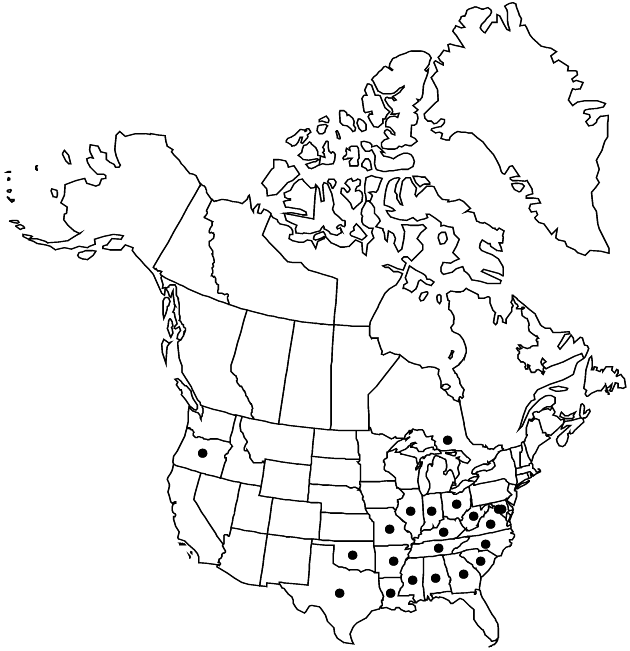Difference between revisions of "Crepis pulchra"
Sp. Pl. 2: 806. 1753.
FNA>Volume Importer |
imported>Volume Importer |
||
| Line 8: | Line 8: | ||
}} | }} | ||
|common_names=Smallflower hawksbeard | |common_names=Smallflower hawksbeard | ||
| + | |special_status={{Treatment/ID/Special_status | ||
| + | |code=I | ||
| + | |label=Introduced | ||
| + | }}{{Treatment/ID/Special_status | ||
| + | |code=F | ||
| + | |label=Illustrated | ||
| + | }} | ||
|basionyms= | |basionyms= | ||
|synonyms= | |synonyms= | ||
| Line 24: | Line 31: | ||
|elevation=0–3000 m | |elevation=0–3000 m | ||
|distribution=Ont.;Ala.;Ark.;D.C.;Ga.;Ill.;Ind.;Ky.;La.;Md.;Miss.;Mo.;N.C.;Ohio;Okla.;Oreg.;S.C.;Tenn.;Tex.;Va.;W.Va.;Eurasia. | |distribution=Ont.;Ala.;Ark.;D.C.;Ga.;Ill.;Ind.;Ky.;La.;Md.;Miss.;Mo.;N.C.;Ohio;Okla.;Oreg.;S.C.;Tenn.;Tex.;Va.;W.Va.;Eurasia. | ||
| + | |introduced=true | ||
|discussion=<p><i>Crepis pulchra</i> is identified by its annual habit; solitary, erect, glandular, and viscid stems; narrowly oblanceolate, runcinate, hispid leaves with relatively large terminal segments; glabrous and strongly keeled phyllaries; sometimes dimorphic cypselae; and fluffy, dusky white pappi.</p> | |discussion=<p><i>Crepis pulchra</i> is identified by its annual habit; solitary, erect, glandular, and viscid stems; narrowly oblanceolate, runcinate, hispid leaves with relatively large terminal segments; glabrous and strongly keeled phyllaries; sometimes dimorphic cypselae; and fluffy, dusky white pappi.</p> | ||
|tables= | |tables= | ||
| Line 47: | Line 55: | ||
|publication title=Sp. Pl. | |publication title=Sp. Pl. | ||
|publication year=1753 | |publication year=1753 | ||
| − | |special status= | + | |special status=Introduced;Illustrated |
| − | |source xml=https:// | + | |source xml=https://bibilujan@bitbucket.org/aafc-mbb/fna-data-curation.git/src/bb6b7e3a7de7d3b7888a1ad48c7fd8f5c722d8d6/coarse_grained_fna_xml/V19-20-21/V19_303.xml |
|tribe=Asteraceae tribe Cichorieae | |tribe=Asteraceae tribe Cichorieae | ||
|genus=Crepis | |genus=Crepis | ||
Revision as of 21:36, 27 May 2020
Annuals, 5–100 cm (taproots slender). Stems 1, erect, simple, proximally hispid and stipitate-glandular (viscid), distally glabrous. Leaves basal and cauline; petiolate; blades oblanceolate or runcinate, 1–24 × 1–5 cm, (bases attenuate) margins deeply pinnately lobed to denticulate (lobes triangular, terminal lobes largest), apices obtuse to acute, faces densely stipitate-glandular (viscid). Heads 10–40, in loose, corymbiform arrays. Calyculi of 5–7, ovate or lanceolate, glabrous bractlets 1–2 mm. Involucres cylindric (turbinate in fruit), 8–12 × 3–5 mm. Phyllaries 10–14, (green medially) lanceolate, 8–10 mm, (bases strongly keeled and thickened, margins scarious), apices acute, faces glabrous. Florets 15–30; corollas light yellow, 5–12 mm. Cypselae (monomorphic or dimorphic) green to yellowish brown, subcylindric, outer 5–6 mm, inner 4–5 mm, apices attenuate (not beaked), ribs 10–12; pappi dusky white (very fine, fluffy), 4–5 mm. 2n = 8.
Phenology: Flowering Apr–Aug.
Habitat: Dry open habitats, rolling grasslands, pastures, abandoned fields, waste areas, railroads, roadsides
Elevation: 0–3000 m
Distribution

Introduced; Ont., Ala., Ark., D.C., Ga., Ill., Ind., Ky., La., Md., Miss., Mo., N.C., Ohio, Okla., Oreg., S.C., Tenn., Tex., Va., W.Va., Eurasia.
Discussion
Crepis pulchra is identified by its annual habit; solitary, erect, glandular, and viscid stems; narrowly oblanceolate, runcinate, hispid leaves with relatively large terminal segments; glabrous and strongly keeled phyllaries; sometimes dimorphic cypselae; and fluffy, dusky white pappi.
Selected References
None.
